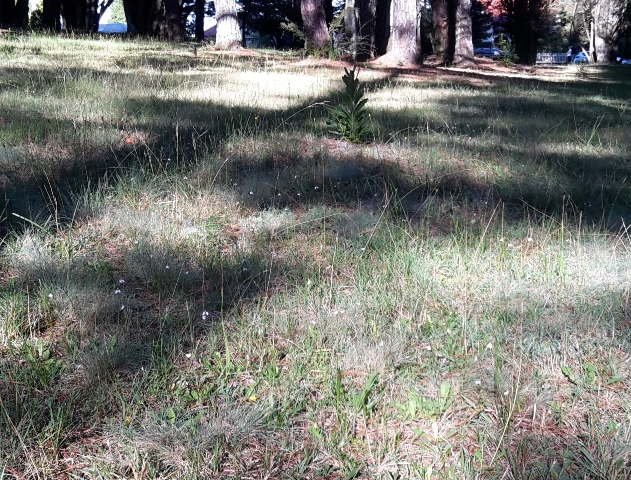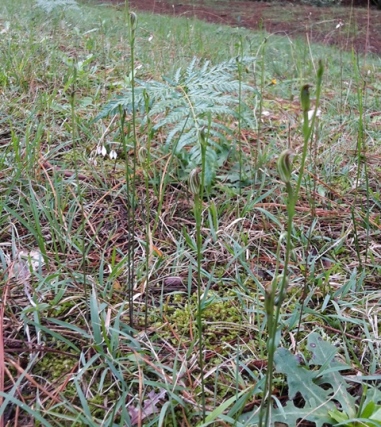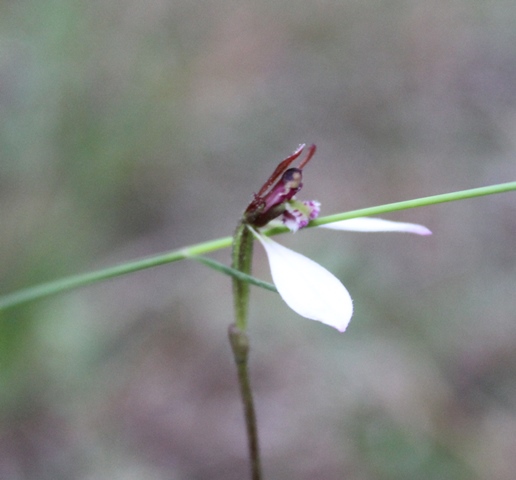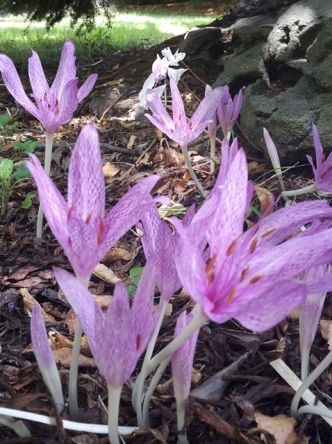
Colchicum cilicicum and cyclamens
The non floral signs of autumn for us are bare patches in the lawns from curl grub damage and bare areas appearing in garden beds as we deadhead and cut back the summers flowers. We used parasitic nematodes on one of our two wedding lawns at the beginning of December and now have much worse baring off on the untreated lawn. Tom and I dug up a shovel sized square from both lawns to see what we could find. We only did this once for each lawn because the dug areas are not a good general look for weddings. In the lawn untreated last year we found 7 big curl grubs in the 20cm square hole dug by the shovel. On the lawn treated in December we found 3 smaller grubs in the same sized area. These are very encouraging results and we hope that our treatment did reduce the population of large grubs in December. These curl grubs are the Dusky Pasture Scarab larvae Sericesthis nigrolineata.

Lawn treated in December

Untreated Lawn
.
We decided to do an autumn treatment to remove the big grubs currently doing the damage and give the lawn a good run through the autumn. Last week we measured the ground temperature at 20degrees C. We ordered the nematodes from Ecogrow in Canberra and they arrived yesterday. In a week the ground temperature has dropped to 16degreesC! They are stressed below 15degreesC. The ambient temperature when I put them on was around 14degreesC so we hope they quickly find a nice warm curl grub to cosy up to!!
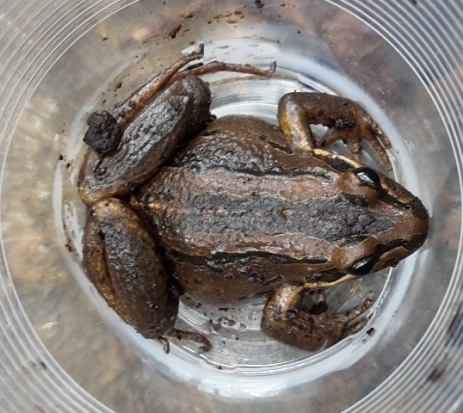
Striped Marsh Frog
We are putting out our site made compost on garden areas that are looking a bit bare. I found this frog in the compost as I spread it on the garden. It was lucky not to get skewered with the mulch fork. The frog measures around 4.5cm long and I think it is a Striped Marsh Frog Limnodynastes peronii.
A few more floral signs of autumn are autumn roses, late summer/autumn wisteria and dahlias. I have not had much success with dahlias as part of border plantings but continue to try, focusing on the smaller varieties. I bought this dahlia at a community market knowing it was a seedling of the Bishop of LLandaff. I bought the seedling with the darkest foliage and while the flower has not turned out red it is making a healthy show in the entrance driveway.

Soul Sister

Autumn wisteria

Seedling from Bishop of LLandaff









